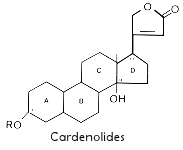
What is a Cultivar?
A "cultivar" is a native plant that has been altered to change its characteristics. Changes may include one or several of the following characteristics: flower color, flower shape, leaf color or leaf shape, plant size or plant shape or length of flower bloom to name a few. These changes are easy to see and are often driven by consumers to diversify their gardens. The scientific community, including environmental agencies, are not in full agreement that cultivars are a good idea.
Potential Benefits
Benefits of cultivars include a new sub-species (my apologies to Charles Darwin) that capture the best qualities of one plant and cross them with another. Resulting plants, called cultivars, enhance gardens with plants with more diverse colors, leaf shapes and other qualities including insect and disease resistance. What gardeners often don't understand are the changes in plant features that cannot be seen. These changes may have beneficial or harmful effects on insects, such as Monarch butterflies who rely on them.
Changes in Cultivar Milkweed Plant Characteristics
Three changes in milkweed that have the potential to effect Monarch butterfly behavior and potential health include:
1. Latex
Latex is the white sap substance in all milkweeds. Botanists have
shown that cultivar milkweed plants differ if the amount
(measured in mg's) of latex exuded1. This raises the question: will
milkweed that exude higher flows of sap help or hinder Monarch
butterfly caterpillar health?
2. Trichomes
Trichomes are tiny hairs that cover the leaves of milkweed
leaves and stems. These hairs are thought to be a defensive
mechanism to protect the leaves. The greatest impact trichomes
have on Monarch butterfly survival is during the first two days of
life. Do altering trichome concentrations on milkweed help or hinder
Monarch butterfly health?
3. Cardenolides
Cardenolides are a liquid steroidal chemical found in milkweed plants.
Cardenolides are toxic and can affect interfere with cardiac functions.
Monarchs have evolved to sequester cardenolides, essentially
storing it and making them toxic should they be eaten. The levels of
cardenolides in cultivar milkweed varies considerably.1 This raises
the question: do increasing or decreasing levels of cardenolides in
milkweed help or hinder Monarch butterfly health?
Answers to the Cultivar Questions
Whether milkweed cultivars such as Hello Yellow, Cinderella, or Ice Ballet have a negative impact on healthy Monarch Butterfly was the focus of a 2020 study. 1 The conclusion of the study found cultivars such as A. incarnada and A. tuberosa are suitable, as is their native parent, for attracting and supporting Monarch butterflies.1
My personal use and observation of milkweed cultivars is positive. I have observed hybrid plants to be more difficult to grow from seed and are not has hardy as the native plant. Given the positive results of Baker et. Al. study1 - I will continue to use these plants in gardens we plant for you.
1. Baker, A. 2020. Suitability of native milkweed species vs. cultivars for supporting monarch butterflies and bees in urban gardens.



Credit: A. Agrawal
Credit: Bing
Credit: Bing

Scientifically, both these plants are called Asclepias tuberosa. The native plant on the left has from pale to deep orange flowers. The plant on the right is a cultivar and has been bred to produce yellow flowers. The leaves are similar but the flower color and structure are quite different. Do they have the same nectar yield? Will females lay eggs on this non-native plant?
While science can make changes to plants quickly, we can't be sure if Monarchs will accept these as acceptable plants for their eggs and caterpillars.
